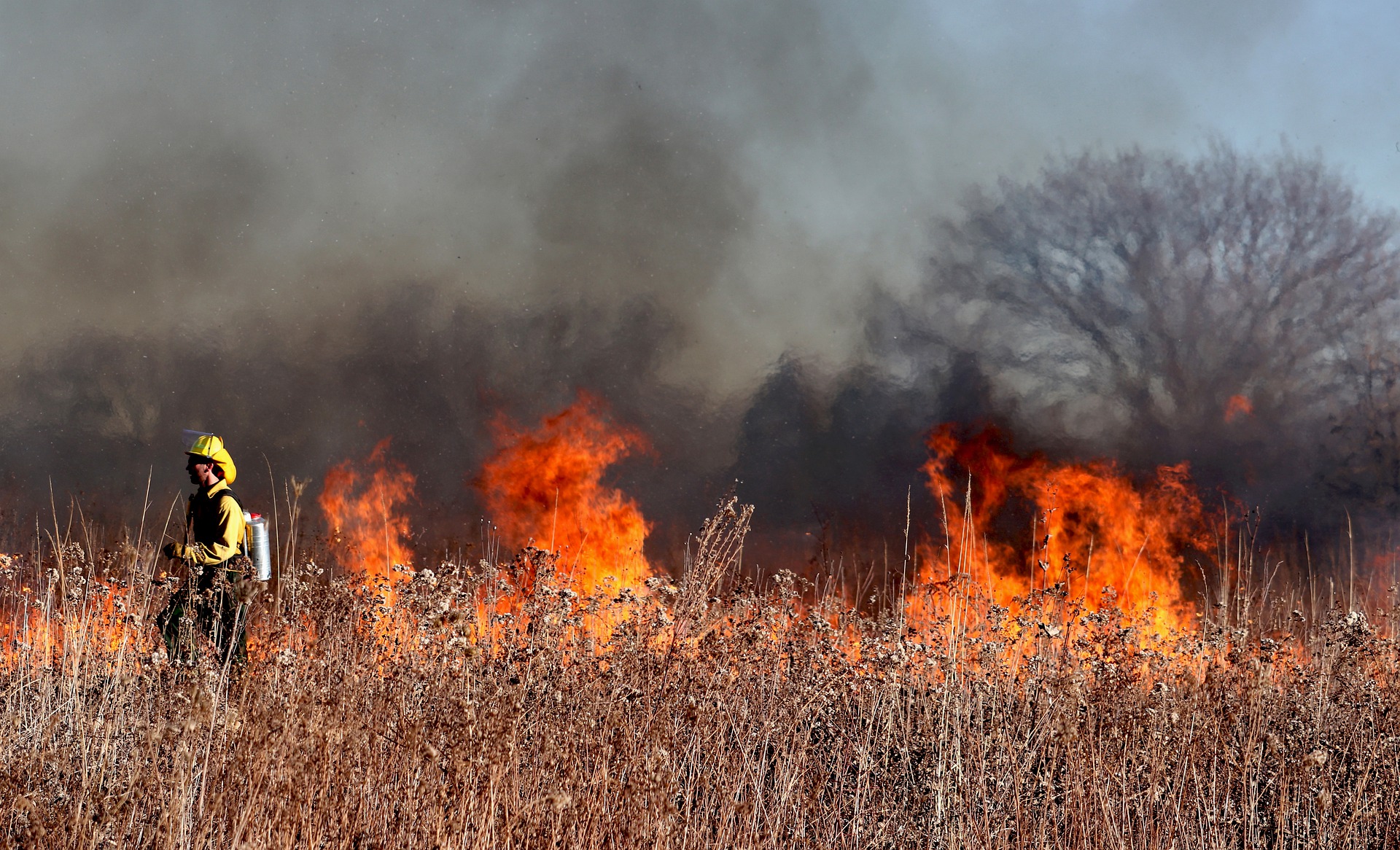Below are summaries from the National Significant Wildland Fire Potential Outlook, provided by the National Interagency Fire Center, for the period of April through July 2023. Additionally, the full wildfire outlook can be located here.
Year-to-Date Statistics:
| Year-to-date statistics | Number of Fires | Acreage Burned |
| 2023 (01/01/23 – 03/01/23) | 3,485 | 28,701 |
| 10-year Average (2013-2022) | 4,000 | 82,012 |
| Percentage of 10-year Average | 87% | 35% |
Source: https://www.nifc.gov/fireInfo/nfn.htm
Observations in March:
Significant fire activity remained low across much of the US in March, but an increase of significant fires occurred in Southern, Southwest, and Rocky Mountain Areas. Increasingly receptive fuels were noted in the eastern Carolinas into the Mid-Atlantic, on the Florida Peninsula, and from Texas onto the southern and central High Plains and into southern and central New Mexico. Year-to-date acres burned for the US is 25% of the 10-year average, with a below average number of fires, near 79% of the average.
Substantial precipitation and below normal temperatures continued in March across the West, with near to well above normal snowpack, including record high snow water equivalent (SWE) values in the Sierra, Nevada, Utah, and Arizona. Most of the Plains and the Florida Peninsula remained dry, with below average precipitation also observed along the Gulf Coast, in Texas, and the Carolinas into the Mid-Atlantic. Temperatures were above normal in the southeastern US and along the East Coast. Drought improved across most of the West, including two category improvements in several areas, but drought emerged or worsened along the Gulf Coast, in Florida, and from the Carolinas to the Mid-Atlantic, with severe and extreme drought on portions of the southern and central Plains.

US Drought Monitor Status as of March 28, 2023
US Drought Status
An active weather pattern emerged over the CONUS in March due in large part to a historically strong Madden-Julian Oscillation. Consistent upper-level trough passages moved across the West, with ample Pacific moisture. Therefore, most of the West experienced above normal precipitation. However, this does not include portions of Washington, the Idaho Panhandle, northwest Montana, and southern portions of the Southwest. Much of the Plains had below normal precipitation except for portions of the northern Plains and near the Red River. The Mid/Lower Mississippi and Ohio Valleys had above normal precipitation, but the Mid-Atlantic, Florida Peninsula, and much of the Gulf Coast had below normal precipitation.
Temperatures were generally below normal across the West and Plains into the Midwest. Above normal temperatures were experienced in the Southeast, East Coast, and along the Gulf Coast into Texas. Severe weather resulted in 26 deaths across Mississippi, Alabama, and Georgia late in March, with another high-end widespread severe weather event on March 31 from the Midwest into the Southeast.
Drought improved across most of the West, including two class improvements in most states. However, it did expand and intensify slightly in portions of northern Oregon and eastern Washington. Additionally, drought expanded and intensified in much of Texas, along the Gulf Coast, on the Florida Peninsula, and in portions of the Mid-Atlantic. Drought improved across the northern Plains and in Lower Michigan. Extreme to exceptional drought remains in portions of Texas, western Oklahoma, southern and western Kansas, and in portions of Nebraska.
Wildfire Outlook for April to July:
Above normal significant fire potential is expected from eastern North Carolina through Virginia, on the Florida Peninsula, in Puerto Rico, the US Virgin Islands, far west-southwest Alaska, and from southwest Texas through southern and eastern New Mexico and southeast Arizona during April. Above normal potential will continue in far west-southwest Alaska, southwest Texas, and the Florida Peninsula in May. Below normal significant fire potential is expected in northern Arizona in April spreading northward into portions of the southern Great Basin during May.
In June, below normal potential will extend from northwest Arizona through the central Utah mountains and throughout the entire Sierra into northwest California. Below normal potential will continue in the Sierra through July. Northeast Montana into southeast North Dakota will have below normal potential from April through July. Some above normal potential is forecast in central Washington and Oregon through southeast Oregon and southwest Idaho. This is due to forecast warmer and drier conditions and above normal fine fuel loading on rangelands.

April 2023 NIFC Predictive Services Fire Potential Outlook

May 2023 NIFC Predictive Services Fire Potential Outlook

June 2023 NIFC Predictive Services Fire Potential Outlook

July 2023 NIFC Predictive Services Fire Potential Outlook
Source: NIFC





One Comment